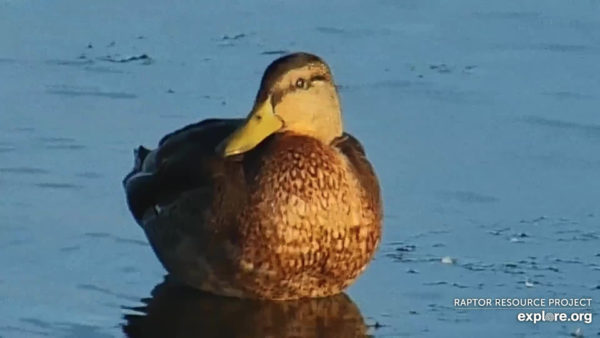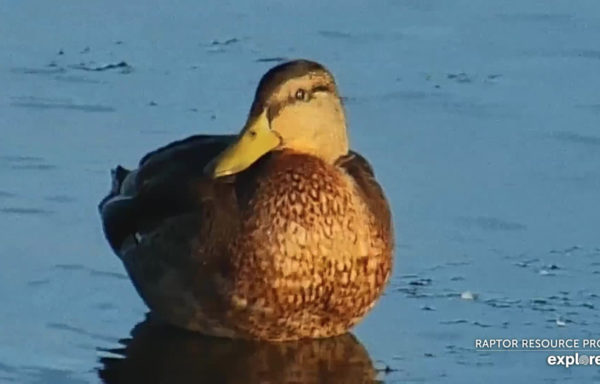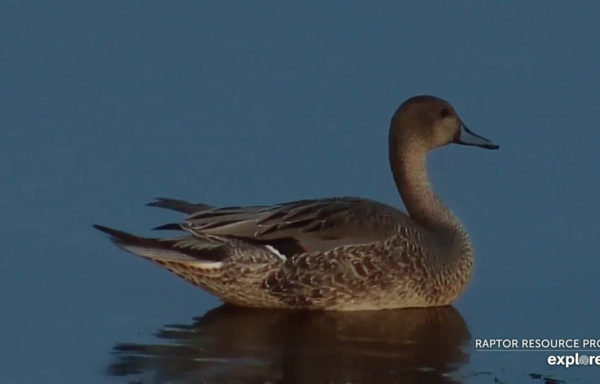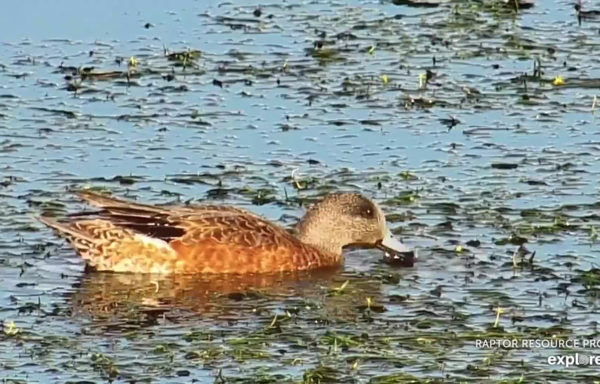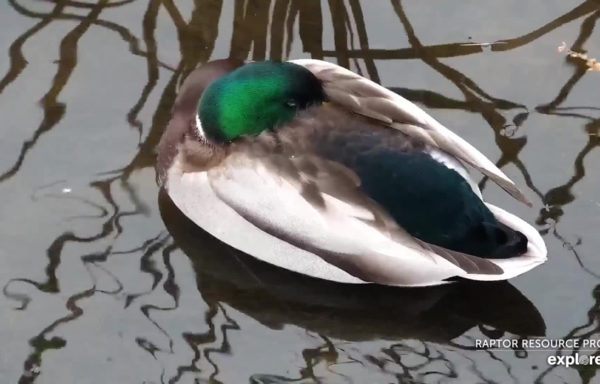Information About The Bird
Seen/Heard at
Mississippi Flyway
Diet
Like many birds, American Black Ducks vary their diet depending on age, season, and breeding status. Although they are omnivorous, animal food is essential for breeding and laying adults. In addition to plant food, a breeding adult’s diet includes aquatic and terrestrial insects and larvae, crustaceans, mollusks, and fish. While all American Black Ducks eat plant foods, non-breeding birds often eat a higher percentage of plant foods relative to animals foods, including seeds, roots, tubers, stems, the leaves of moist soil and aquatic plants, corn, and other grains when available.
American Black Ducks are puddle or dabbling ducks that forage in shallow water and on land. They can be found in shallow fresh, brackish, and salt-water habitat.
Nesting
American Black Ducks lay eggs from early March through early August, with the majority of egg laying occurring between late March and mid-June. They breed in northeastern Canada south to the Great Lakes region and the northeastern seaboard of the United States. A female duck selects the nest site and builds a nest by digging in litter and soil to form a cupped depression or scrape, which she lines with grass, twigs, leaves, stems, conifer needles, and down. She will lay roughly seven to ten white, buff, or pale green eggs, producing one brood per year, although she may reclutch if her first clutch fails. Females incubate eggs for roughly 26 days and young leave the nest within 24 hours of hatching.
General Description
American Black Ducks are large dabbling ducks that float high in the water. They have dark brown bodies with pale gray-brown heads and yellow-green bills. Both sexes resemble female Mallard ducks, but their speculums (think wing patch) are an iridescent purple and lack the Mallard’s white border.
Migration
American Black Ducks have been recorded wintering in open northern water, but they are more commonly found along the eastern seaboard and south central United States.
Measurements
Length: 21.3-23.2 in/54-59 cm
Wingspan: 34.6-37.4 in/88-95 cm
Weight: 25.4-57.9 oz/720-1640 g
Wing Design
High Speed. Medium long and narrow, optimized for bursts of high speed. Read more about duck wings here:
https://www.ducks.org/conservation/waterfowl-research-science/wings-in-action
Citations
The Cornell Lab of Ornithology Birds of the World: American Black Duck
eBird.org: https://ebird.org/species/ambduc
Other Dabbling Ducks
| See also different: | Dabbling Ducks, Mississippi River Flyway |
